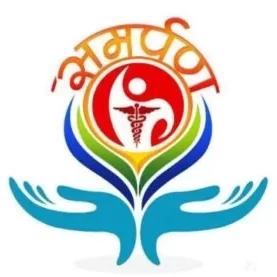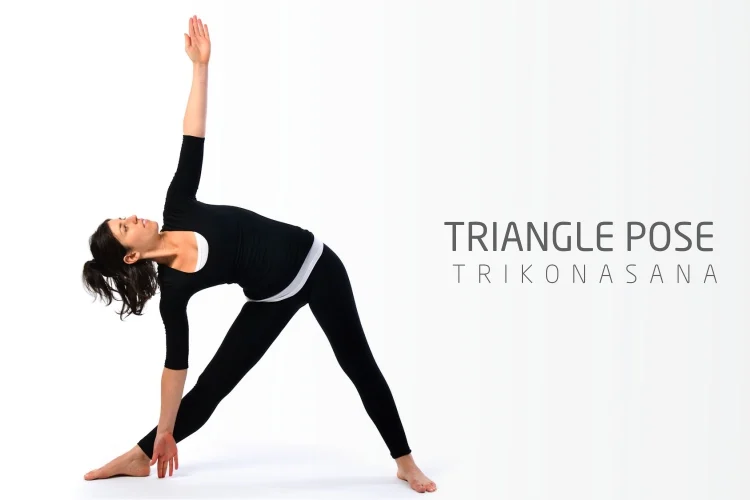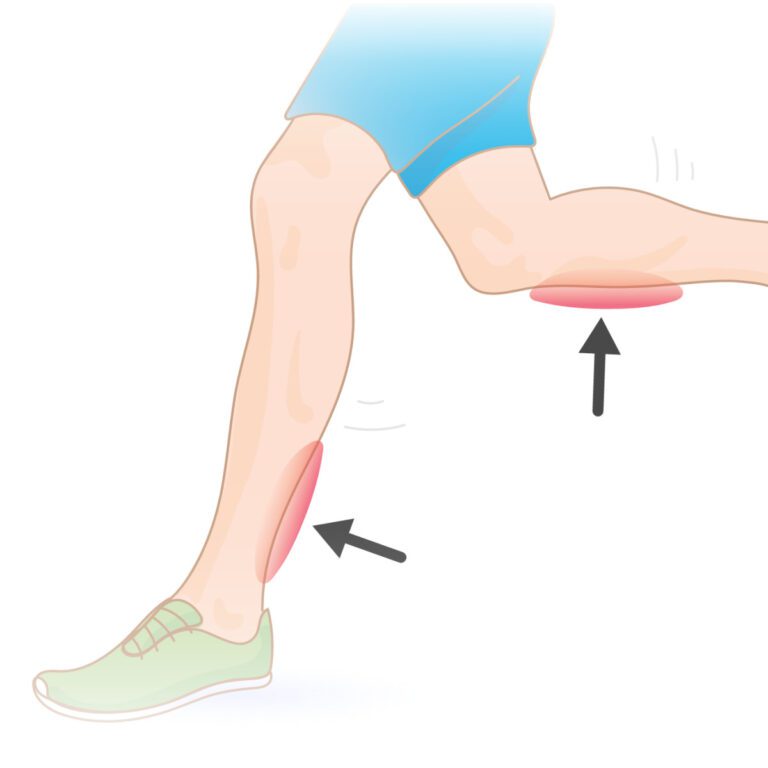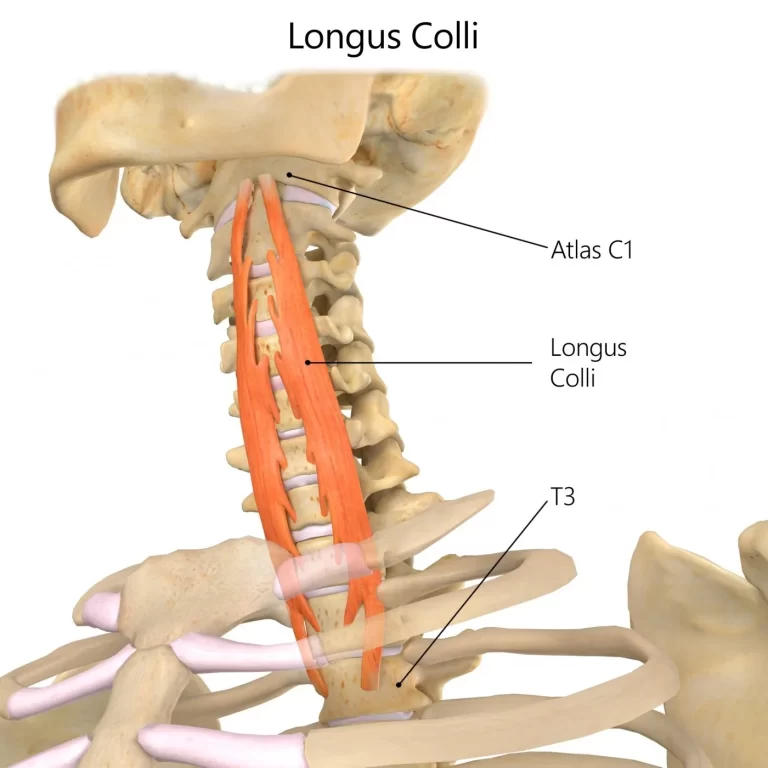Triangle Pose (Trikonasana)
Table of Contents
What is a Triangle Pose (Trikonasana)
Triangle Pose (Trikonasana) is a classic standing yoga posture that stretches and strengthens the legs, hips, and spine. It improves balance, opens the chest and shoulders, and enhances overall body alignment.
The basic posture’s name is inspired by the triangle shape your body creates as you take your bottom hand to the floor and keep your feet grounded during the movement. The phases and techniques used in Trikonasana differ widely. Trikonasana comes in three varieties: Marietta, Utthita, and Baddha.
Trikona – Triangle; asana – Pose.
The pronunciation of this pose is Tree-Kone-Nah -sah-Nah (Trikonasana). The Sanskrit words “asana” (position) and “trikona” (three corners) are combined to form “trikonasana.” Trikonasana yoga calls for extending the legs without bending the knees and spreading the hands apart to create a 90-degree angle between the upper and lower bodies. The Triangle Pose requires maintaining eye contact to maintain bodily equilibrium, unlike most other yoga poses.
Which muscles does Trikonasana use?
- Quadriceps
- Hamstrings
- Calves
- Adductors
- Abductors
- Transverse abdominis
- Obliques
- Erector spinae
- Deltoids
- Pectoralis major
- Latissimus dorsi
- Biceps
- Triceps
- Sternocleidomastoid
What Are the Health Benefits of Triangle Pose (Trikonasana)?
Strengthens the Legs
Trikonasana, often known as Triangle Pose, is a basic yoga pose that is well known for strengthening the lower body. This pose targets and strengthens the muscles in the thighs and calves. A sense of physical empowerment is enhanced by maintaining the triangle posture, which also strengthens the legs and improves stability.
Stretches the Hamstrings and Hips
The characteristic triangular pose of trikonasana strains the hamstrings and hips deeply. These commonly tense areas are relieved, flexibility is increased, and tension is decreased by the muscles’ elongation.
Stimulates the Abdominal Organs
Trikonasana’s mild twisting motion assists in stimulating the abdominal organs. This twist promotes improved digestion and cleansing, which results in a healthier internal environment.
Improves Balance and Stability
Trikonasana needs to be done carefully and under control. It tests equilibrium and enhances stability. Doing this position regularly helps to center and strengthen the body, which improves balance overall.
Opens the Chest and Shoulders
Trikonasana’s extended reach and lateral stretch have significant effects on the chest and shoulders. This action opens up these areas, promoting flexibility, releasing tension, and increasing the range of motion.
Relieves Back Pain
Trikonasana offers therapeutic advantages and helps to align the spine. The small stretching and strengthening of the muscles along the spine can reduce some of the pain and suffering associated with the back.
Calms the Mind
When combined with intentional breathing techniques, the meditative aspect of trikonasana promotes both physical and mental calm. This mindful method promotes relaxation by strengthening the mind-body connection.
Stimulates Blood Circulation
Trikonasana’s careful and prolonged form encourages the body’s blood to circulate healthily. This stimulation supports cardiovascular function by making certain nutrients and oxygen reach various tissues in the proper amounts.
Promotes Better Posture
Regular practice of Trikonasana improves posture significantly. By strengthening the core and balancing the spine, the pose promotes an upright and balanced stance and reduces the possibility of postural issues.
Helps To Improve Fitness Level and Weight Loss
Weight loss is facilitated by Trikonasana (Triangle Pose), which enhances digestion and increases metabolism. Additionally, it improves general flexibility and balance while reducing the waist, hips, and thighs.
Which poses are necessary for Trikonasana preparation?
- Katichakrasana
- Vrikshasana
- Konasana
How to Perform Trikonasana?
- Stand up straight and extend your legs apart. You should space your legs a little wider than shoulder-width apart.
- Breathe. Raise your head to the level of your right hand. The right arm and right ear should be straight.
- Exhale. You should bend your left torso at the waist.
- Simultaneously slide your left arm down your left leg until your fingers touch your ankle.
- Your right arm should now be horizontal, and your head should be tilted to the left.
- Keep your elbows and legs straight to hold the pose. Hold the position for 30 seconds.
- Breathe. Get to your feet straight.
Trikonasana Video
What are a few suggestions for Trikonasana practice?
- Make sure you have warmed up your entire body before beginning the asana.
- Take your time leaning forward to avoid losing your balance.
What are the Trikonasana follow-up poses?
- Virabhadrasana
Which Triangle Pose Tips Are Best for Beginners?
- To keep both sides of your waist long, place your hand on a block on the inside or outside of your foot, depending on how it feels for your body.
- Applying pressure via your feet causes your upper body to appear lighter, something known as the press-rebound effect.
Which Triangle Pose Types Are There?
You can create other kinds of Trikonasana if you want to vary things up, like:
- UtthitaTrikonasana (Extended Triangle Pose)
- Parivritta Trikonasana (Revolved Trikonasana, or Revolved Triangle)
- Baddha Trikonasana (bound triangle pose)
- Baddha Parivritta Trikonasana (bound revolved triangle pose)
- Supta Parivritta Trikonasana (reclining revolved triangle pose)
- Bikram’s Triangle or Trikonasana
- Supta parivrtta trikonasana
- Supta utthita trikonasana
UtthitaTrikonasana (Extended Triangle Pose)
What is UtthitaTrikonasana?
Triangle Pose (Utthita Trikonasana) is a basic pose in almost all styles of yoga. Triangle Pose’s simplicity of setup betrays how well it works as a hamstring stretch. The chest can open up and twist deeply after the pose’s foundations are established with planted feet and strong legs.
The extended Trikonasana, also called the extended triangle position (Utthita Trikonasana), is nearly as easy to prepare and perform as the conventional Trikonasana, except for a slightly altered hand placement and an increased stance to open the pelvis. For instance, pinch your big toe or place your lower hand flat on the floor close to your right foot rather than stopping at the shin or ankle when reaching it with your right hand.
You can achieve a good balance between heart-opening chest expansion and landing stability with Utthita Trikonasana. This position calls for concentration and deep breathing to help you take your wandering mind into focus while connecting yourself fully to the present moment.
It is helpful to remember that the Extended Triangle posture is an exact representation of its name when performing the somewhat challenging but very advantageous position: In it, your body creates triangles of varying sizes. Think about the small triangle that forms between your arm, front leg, and upper torso, the large angle that your side body makes with the mat and front arm, and the angles that your legs make with the floor.
How to do Utthita Trikonasana?
- Use the muscles in your left thigh to pull your left femur into its socket. Keeping your left hip tucked in, extend your left hand toward the front of the room. Place your left hand on your shin or ankle. Put your left hand on the inner of your left foot if you’re more open. You should complete the one that is most comfortable for you.
- You open your chest so that your right shoulder stacks on top of your left, reaching your right fingertips toward the ceiling while maintaining your right shoulder in its socket.
- Relax your left knee gradually to prevent hyperextension. (This is known as a micro bend.)
- Hold for five breaths or more.
- Repeat with your right leg outstretched.
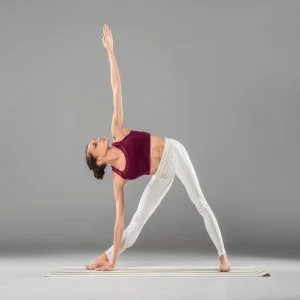
Parivritta Trikonasana (Revolved Trikonasana, or Revolved Triangle)
What Is Parivrtta Trikonasana?
- A common alternative to Trikonasana is Parivritta Trikonasana or the rotated triangle position. In the revolved position, the trunk must be tightly twisted so that the left-hand reaches the right foot, whereas in Utthita Trikonasana (with the right foot forward), the right hand stretches down towards the right foot.
- Yoga poses based on triangles include the revolved triangle position (Parivrtta Trikonasana). The revolved triangle is perfect for both new and experienced yogis, and it will improve your mental and physical health.
How to Do Parivrtta Trikonasana?
- Put yourself in a position. Place your feet approximately four feet apart and lift your arms so that your hands are parallel to the floor and facing down. This is known as Tadasana, or the mountain posture. Starting from the left foot, angle your right foot 45 degrees and your left foot 90 degrees toward the mat’s end.
- Bend to the side. Take a deep breath and let it out as you extend sideways over your left leg (if you’re starting on the left) and flex your body at the hip joint. Keep your sides straight rather than squeezing your waist. Check that your tailbone and front heel level up.
- Stretch your arms out. If your right foot is in front of you, reach your left arm down to your right foot, or your right arm down to your left foot. Hold your big toe or ankle lightly with the hand out toward the floor. Put your second hand on your hips at the same moment. If you like to extend the stance a bit, you might extend your opposing arm toward the roof or ceiling.
- While holding, repeat. Maintaining your shoulders in position, turn your head and look up at the roof. After a brief period of holding, return to the starting position and repeat with the other leg.
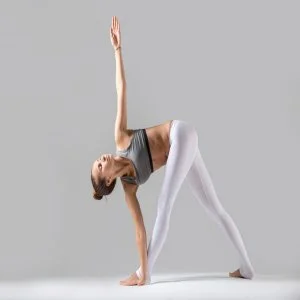
Baddha Trikonasana (bound triangle pose)
What is Baddha Trikonasana (Bound Triangle Pose)?
The bound triangle pose, which is a version of Trikonasana, involves yogis extending their torsos past the point at which they can bind with their hands. The two main components of mastering baddha trikonasana are grasping the abdominal muscles and stretching the hamstrings of the straight leg. They also help to stretch the muscles of the diaphragm and stimulate internal organs.
How to do baddha trikonasana?
- Start by taking a lunge position.
- Pull the back heel down while turning your foot 30 degrees inward.
- Insert both hands into your front foot on the ground now.
- Breathe deeply. Exhale and flex your upper body inside your front leg.
- Place your left shoulder under your left thigh and the top of your left shoulder below your calf.
- Put your left hand’s back into the outer part of your left hip.
- Swing your right arm while holding your right wrist behind your torso with your left hand.
- Rotate your right shoulder over your left shoulder. face down.
- Straighten your left leg.
- Raise your torso parallel to the floor so that your knee and upper body move isometrically in opposite directions. Make sure that your knee and hand are pressed together.
- Raise your ribs and abdomen. Face up, hold your breath, and straighten your posture.
- Let go, face down. You should flex your front knee. Once the bind is released, place your hands on either side of your foot.
- Repeat on the opposite side.
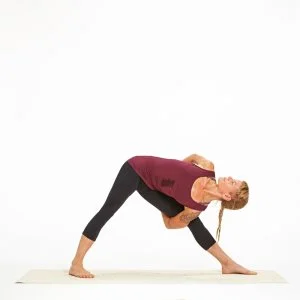
Baddha Parivritta Trikonasana (bound revolved triangle pose)
What is Baddha Parivritta Trikonasana ?
This looks like Parivritta Trikonasana, but it is performed with the hands, like Baddha Trikonasana, which is for unrotated (Utthita) Trikonasana.
How to do Parivrtta Baddha Trikonasana?
- Start by performing a lunge. With your thumb on the middle and your fingers on the outside quadriceps, grasp your upper thigh with your left hand.
- Raise your right hand straight up.
- Now exhale, shift your torso to the left, and rest your right shoulder on your outer left knee. Place your left hand in the crease of your left hip. Now pull your left hip back and down.
- Now swing your left hand behind your back and your right hand under your left leg. Grab your left wrist with your right arm, or vice versa.
- When facing down, take a little step forward with your back foot. Rotate your foot 60 degrees after lowering your rear heel.
- Move your left hip backward so that your thigh is in parallel with the mat’s long edge.
- The front leg should remain straight.
- Turn your abdomen and ribs upward and rotate your left shoulder over your right shoulder.
- Raise your face. After holding the position, take a breath.
- To release, flex your front knee, look down, and release your hands to either side of your left foot. Step back with your left foot, then lift your back heel.

Supta Parivritta Trikonasana (reclining revolved triangle pose)
In the reclining triangle pose, or Supta (Utthita) Trikonasana, the torso, arms, and legs are positioned precisely as in the standing (Utthita) Trikonasana, but the body is at rest. The yoga mat should be positioned with the feet pressed against a wall and at a moderate distance from it.
Bikram’s Triangle (Trikanasana)
What is Bikram’s Triangle?
To perform the Bikram triangle pose, you must have strong, open hips. Initially, the posture may be somewhat challenging, particularly if your lower body strength keeps growing. The intensity in your hips and legs can easily overwhelm you, but you need to keep your focus on the connection between your straight leg and spine. You can still get to the straight line even with less severe knee flexion. Make sure your abdomen is as straight and firm as it can be. Next, check that your hips are open and not twisted.
How to do Bikram’s Triangle Pose?
- To begin, stand still with your feet together and your hands by your sides.
- As you take a breath, raise your arms above your head. As you exhale, take a step to your left, maybe two or three feet.
- Make sure your hands are sideways and parallel to the floor.
- Keeping your hips looking forward, turn your left foot outward as much as you can.
- When you bend your left knee 90 degrees, it should be perfectly above your ankle. Keep your upper body straight and your right hip as far back as you can. Turn the hands to the front row.
- Your torso should drop. Your left hand should touch your left big toe, and your right arm should be straight up. Your chin should be in front of your right shoulder. Now face up, hold the pose, and count to ten.
- Straighten your upper body and lift your head forward. Make sure your hands are on the ground sideways.
- Turn your toes toward the front and straighten your left leg.
- Turn your right foot outward and make sure your hips are facing forward.
- When you bend your right knee 90 degrees, it should be precisely above your ankle. Your upper body should remain standing, and your left hip should remain back. Now place your palms face-front.
- Lower your upper body. Your left hand should brush your right big toe, and your right arm should be pointing straight up toward the roof. Your chin should be in contact with your left shoulder. Count to 10 while maintaining the face-up position.
- Straighten your upper body and lift your head forward. Ensure that your arms are parallel to the floor. Your toes should be facing forward, and your right leg should be straight.
- As you inhale, bring your feet together and lift your hands into the air.
- Set your hands aside and release your breath. Stay still.
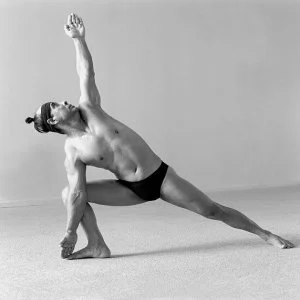
What are the Triangle Pose Precautions?
- This pose is not recommended for people who have severe back pain.
- Do not perform this yoga if you suffer from migraines.
- Those with previous episodes of high blood pressure, back or neck problems, or diarrhea shouldn’t try this pose.
- Those experiencing dizziness should avoid staring at the ground during the latter stage.
- It is important to handle cervical spondylosis with caution.
- This position exerts too much strain on your knee, which could lead to knee difficulties, so avoid utilizing it as support.
- If you have neck problems, do not look up during that position. It is better to look directly ahead or down at the ground.
What are the Triangle Pose Contraindications?
- Migraine
- Diarrhea
- Low Blood Pressure
- High blood pressure
- neck and back injuries
Conclusion
Trikonasana, or Triangle Pose, is a fundamental yoga pose that improves strength, flexibility, and balance. It improves posture and core stability while stretching the shoulders, legs, and spine. Through focused attention and controlled breathing, this pose can help reduce back pain, improve digestion, and develop awareness.
Trikonasana is an excellent addition to any yoga practice, providing mental and physical advantages. Because it promotes alignment and body awareness, practitioners of all skill levels can benefit from it.
FAQs
What are the advantages of trikonasana?
Trikonasana improves the range of motion and reduces the risk of injury by strengthening the hip flexors and shoulders. Practice the position on both sides for equal benefits to the left and right hips. The triangle the body forms may aid with shoulder and hip loosening.
What are the benefits of the triangle pose?
strengthens the legs and back. opens the hips and extends the calves, shoulders, inner thighs, hamstrings, and spine. energizes, balances, and improves attention. activates the abdominal organs.
What other name is the Trikonasana known by?
Trikonasana, Triangle position, or Utthita Trikonasana are different variations of the same standing yoga practice. You must master this fundamental standing yoga pose if you want to have a strong side core and hamstrings.
Does Trikonasana have any heart-healthy benefits?
Utthita Trikonasana helps the heart open and can be used to expand the chest. This pose lengthens the back and hamstrings while activating the abdominal muscles. Remember that this stance requires some concentration and controlled breathing, which can help you focus better.
Which Trikonasana mistakes are most frequently made?
As quickly as your right-hand touches the floor, do not bend your right knee. Maintaining a straight right leg is very important. Placing an object on the floor beneath your hand is an additional option. To avoid overstressing your knee, keep your hand away from it.
References
- Dr.Nidhiphysio. (2024b, October 21). Trikonasana (Triangle Pose): Health Benefits, steps, Types & variations. Mobile Physiotherapy Clinic. https://mobilephysiotherapyclinic.in/trikonasana-yoga-pose/
- Ambatkar, N. (2024b, May 22). Benefits of Trikonasana (Triangle Pose) and How to Do It. Truemeds. https://www.truemeds.in/blog/benefits-of-trikonasana-triangle-pose-and-how-to-do-it
- EkhartYoga. (2021f, August 4). How to do Triangle Pose (Trikonasana) – Ekhart Yoga. Ekhart Yoga. https://www.ekhartyoga.com/resources/yoga-poses/extended-triangle-pose
- How to do Trikonasana – The Triangle Pose | Learn Yogasanas Online | Yoga and Kerala. (n.d.). Yoga. https://www.keralatourism.org/yoga/standing-postures/trikonasana
- Potdar, S., & Potdar, S. (2024, October 23). Trikonasana (Triangle Pose) | How to do | Benefits – The Art Of Living. The Art of Living – Making Life A Celebration. https://www.artofliving.org/in-en/yoga/yoga-poses/trikonasana-triangle-pose
